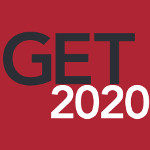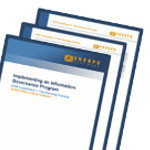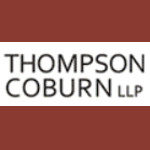By Robert E. Goodman, Jr.
Copyright 2015
Somebody at work bumps into you. You feel a little pinprick in your back but the feeling goes away immediately. You don’t even think about it again. Especially because the person who bumped you apologizes for any pencil mark. If you do think about it again, you don’t see any mark.
Or let’s say the same person bumps into you almost two weeks later but you feel nothing, but you find a spiky object on your clothing at the end of the day.
Two weeks after the first bump, one day after the second, you are confronted by security personnel for your employer. You are told that you were observed going somewhere earlier that day and meeting with a representative of a potential competitor. You were overheard talking to that representative about the employer’s proprietary information. But you went alone, in your own car, to meet this person. As far as you knew, nobody was following you. How did your employer know anything about your going somewhere, or meeting someone, or what you said?
The pinprick represented the insertion into your skin of a semi-permanent homing device lasting months. The burr was a one-day homing device. Whatever homing device was used, a miniature drone was tasked to follow that device and watch and listen to you. But you’re not told about any of that.
You think this is fantasy. It isn’t.
Drones under the Christmas tree, in the backyard, down the block spying on the neighbor’s backyard, are all here, and drones in the workplace are coming. They’re getting smaller, and while there still needs to be some work on making homing devices undetectable, and drones so small you don’t hear or see them, you can be sure the work is proceeding apace. Just go to RadioShack.
Some of the commercially available drones, I understand, can work for eight hours without recharging, and recharging stations in a workplace could be unobtrusively placed. If a drone was to follow an employee home, recharging stations could also unobtrusively be placed in an employee’s home.
Moreover, drones are not only going to see and hear, but maybe smell and see at night with infrared or thermal imaging technology.
We all better watch out.
Drones near airports, the FAA is getting to that. Drones being used by law enforcement, there’s actually beginning to be some court consideration of that. Drones being used to take pictures over someone’s home or business, there’s actually a Texas law on that. Drones being used to take pictures of celebrity weddings, there’s actually a California law coming to deal with that. But drones in the workplace, people are not paying serious attention to that problem yet if they are paying any attention at all.
I started paying attention to the problem two years ago when I wrote a short story about drones in the workplace on our firm’s website. The short story predicts court decisions allowing the use of drones in the workplace. These decisions have not come to pass, but certainly may come to pass. There are no developments in drone technology or in the law during that have made me any less fearful of the problems that will be created by the inevitable use of drones in the workplace.
Last week, there were news reports of drones becoming a $13.4 billion industry with 7,500 commercial drones in the next 3-5 years. More to the point, there was an announcement by Intel last week of a wrist-launched drone. It takes off with laces that wrap your wrist becoming rotors. It then takes your picture and comes back to your wrist like a boomerang.
I say drones in the workplace are inevitable not only for technological reasons, but for other multiple reasons:
First, the temptation to use new technology in connection with work is the temptation we all wake up not resisting every morning. Whether in bed or soon after getting out of it, we punch our fingers to our smartphones. As in the case of other technologies — telephones, copy machines, fax machines and scanners — nobody has resisted the urge to use smartphones for business purposes. As smartphones go, so do drones.
Second, the use of technology by employers to snoop on employees is irresistible. Audio monitoring of telephone calls and fixed cameras in the workplace, nobody even thinks of those as being problematic.
Third, most employers are not the government, with constitutional limitations upon its conduct. You can be sure that private employers will depend upon this distinction in asserting that courts should not prohibit, or even necessarily severely restrict, use of drones in the workplace.
Fourth, with only a few emerging exceptions like the Texas and California laws, the private use of drones is not regulated by statute, that is to say laws specific to drones. There is not, nor is there likely anytime soon to be, a uniform federal law concerning drones covering the entire nation. Only court decisions about whether a particular use of drones invade a reasonable zone of privacy, or court decisions interpreting drone-specific statutes, will allow people to know what is lawful and what is not.
But fear of a privacy lawsuit has certainly not limited many employers from doing things that might at one point have been argued to constitute invasions of privacy, including monitoring telephone calls and emails. It has been enough to argue that the work-related context of an employer’s monitoring, or its ownership of the equipment being used, makes this monitoring okay. This truly centuries-old property distinction, not really a modern privacy distinction, is the basis of the Texas law prohibiting surveillance over real estate. And, given that statute, and, more to the point, the probable difficulty of coming to a consensus on use of drones in the workplace, there may be no other statutes about drones for a while, at least in Texas.
Fifth, as I’ve suggested, drones are getting smaller all the time and if you don’t know you are being monitored, you can’t even complain, except way too late, maybe even as late as a lawsuit. An employer having the opportunity to know a secret about you is a form of voyeurism that every employer will at least indulge, whether or not it is acted upon. If individual supervisors are given discretion, that voyeurism may become pure voyeurism.
Recognizing the inevitability, therefore, of drones in the workplace, and the pattern of courts to accept what might have been questioned as the proper use of other technology, there are a number of questions to ask about where we are headed as far as drones are concerned:
Are we headed toward a world in which employers can monitor employees with drones without their consent, and how far does this go, only at work, or can a drone follow an employee outside the workplace during the middle of the workday, or even go home with the employee? Where is the line to be drawn?
If consent is required, is it going to be sufficient that consent is obtained at the outset of employment or sometime during the employment, like arbitration agreements. Is the consent going to be real? Is consent going to be treated as limited to surveillance or will it cover surveillance outside work?
Are we headed toward a world in which executives never monitor themselves, but everybody else is monitored? That’s a question I raised in my short story. There was an exception to surveillance executives created for themselves.
You may not believe it, but since I pursue discrimination cases, I believe it, are we headed toward a world in which minorities are monitored by drones but non-minorities are not? In which employees with alleged medical problems are monitored but others are not? Suspected whistleblowers? You can imagine other possible questionable examples of disparate drone surveillance.
Are we headed toward a world in which courts accept evidence from drones, which could take up gigabytes of space and be difficult to search. Given its overwhelming data quantity, are courts going to allow effective discovery of that evidence in any lawsuits in which the evidence may be offered?
Are we headed toward a world in which not only employers monitor employees, but, for example, disability insurers or administrators monitor employees on behalf of an employer and do so without the employee’s consent? Unconsented video surveillance of individuals with disability benefit claims, outside the workplace, already occurs.
Are we headed toward a world in which employers monitor prospective employees or in which employees turn the tables and monitor their supervisors? I give the latter example in my short story.
Are we headed toward a world in which courts allow a slippery slope to be created instead of a hard border between proper use of a drone and improper use of a drone in the employment and benefits context?
In my short story, I tried to predict what courts would be doing over the next five years, but who is to say what they will do.
In my story, I predicted that they will start with a distinction between governmental and private use of drones and not restrict drones from being used at all in private workplaces. Then, I suggest courts may, but not necessarily will, develop a reasonable suspicion of impropriety standard, something less than probable cause for governmental employment and criminal purposes. Maybe not, however. Maybe at worst just requiring a human resources representative to fill out a form to get permission to use a drone to monitor an employee.
But I also suggest that courts may not restrict drones from following employees outside the workplace or home if the technology exists to follow them. Such court decisions will, of course, be based on the argument that conduct outside work and at home can have workplace implications. It certainly did in my initial example. The best that can be hoped for, if privacy is to mean much, is that zone of privacy will be established to limit severely, whether or not prohibit, drone surveillance outside the workplace. If a drone follows an employee home, there will be questions of how to deal with information not work-related. This could, of course, include clearly personal information like discussions between family members about family matters. But it could also include information about a person’s behavior or a person’s addiction or a person’s criminal conduct which an employer would actually want to know even if it had a personal element precisely because of the work-related implications. Will an employer have a right to obtain such information using a drone, to retain it, to act on it?
Then I talk about a conflict between an employee’s medical privilege and drone surveillance. That doesn’t seem to be a tough one, the drone going into the psychiatrist’s or doctor’s office, you would think that would be prohibited, but what about a telephone call with a psychiatrist or doctor that happens to be overheard by a drone. That’s an element of my story. Employers, or at least their insurer’s representatives, are already going into doctor’s offices with employees who make workers compensation claims. How far from doing that would drone surveillance be?
The same issue, of course, applies to an employee’s visit with a lawyer.
And I predict that employees could even be subjected to setups that are then recorded by drones when everything else, including other drone surveillance, indicated that there was no basis for being concerned about the employee’s conduct. Coincidentally, the setup in my short story, like that in this speech, is that an employee is told to meet with a representative of a competitor. Unlike my initial hypothetical, however, in the short story the employee is not doing anything wrong at all.
The employee victimized by drone surveillance, or even more to the point, an employee, including in-house lawyer, offended by drone surveillance, is going to have to be brave to make the objection to drone surveillance. The employee is then going to have to be braver, and actually a pioneer, to assert a legal claim and pursue a lawsuit to establish that drone surveillance is improper as a matter of invasion of privacy or under a statute. Unfortunately, such lawsuits are going to be necessary to establish just how far drone surveillance can go. Any employees, of course, who take any one of these brave actions, could get fired themselves for standing their ground.
And boards of directors are going to become involved. In my short story, outside board members associated with the employer in the story had to get involved. Their own companies did not make exceptions to drone surveillance for executives. They were the heroes, but only because they were subject to drone surveillance at their own employers.
And employer groups and local and national Chambers of Commerce and and human resources organizations are going to have to take a stand as well. I predict that law firms will also have to line up on one side or the other from the standpoint of whether they are going to advise employers to use drones. Morality and ethics, not only law, will come into play. As I have already suggested, the employers who do decide to use drones may stall in producing gigabytes of data and courts will have to address those stalling tactics. The issue already exists with production of gigabytes of other kinds of data in lawsuits.
As an attorney for employees, I worry that courts are not going to be very sympathetic with invasion of privacy claims based on drone use by employers or benefit insurers or administrators. I hope it is the case that, even so, some attorneys for employers may be so uncomfortable with use of drones by employers that they will not defend it. But money is powerful. Of course, it will cost a lot more to defend the use of drones than it will cost to insert the homing device and get the drone up and running.
All in all, especially if drones and homing devices veer towards the nano as so many other things are these days, all the prospects relating to drones in the workplace are scary even if you are not easily scared.
About the author
Robert E. Goodman Jr. is senior counsel with Kilgore Law.
 Silanis Inc. presents a free seven-page white paper that discusses how to enforce e-signed contracts and minimize exposure to legal and compliance risk.
Silanis Inc. presents a free seven-page white paper that discusses how to enforce e-signed contracts and minimize exposure to legal and compliance risk. A white paper written by Howard Mavity of Fisher & Phillips give some advice on what managers need to note in order to challenge OSHA citations, especially when the citations arrive months after an inspection.
A white paper written by Howard Mavity of Fisher & Phillips give some advice on what managers need to note in order to challenge OSHA citations, especially when the citations arrive months after an inspection. An NDA is generally one of the most straightforward contracts you manage. So, why is the process of getting the right agreement into the right hands at the right time so complex?
An NDA is generally one of the most straightforward contracts you manage. So, why is the process of getting the right agreement into the right hands at the right time so complex? Akin Gump Strauss Hauer & Feld
Akin Gump Strauss Hauer & Feld Silanis Technologies has posted a
Silanis Technologies has posted a  CTPartners, a leading global executive search firm, has released its
CTPartners, a leading global executive search firm, has released its  Sherpa Software is offering a complimentary four-part white paper series on enterprise information governance.
Sherpa Software is offering a complimentary four-part white paper series on enterprise information governance. An analysis by June DeHart, published in Environmental Leader, discusses the prospects of Congress lifting the ban on crude oil exports.
An analysis by June DeHart, published in Environmental Leader, discusses the prospects of Congress lifting the ban on crude oil exports. Thompson Coburn LLP has
Thompson Coburn LLP has  Copyright has been going through an identity crisis in the digital age,
Copyright has been going through an identity crisis in the digital age,